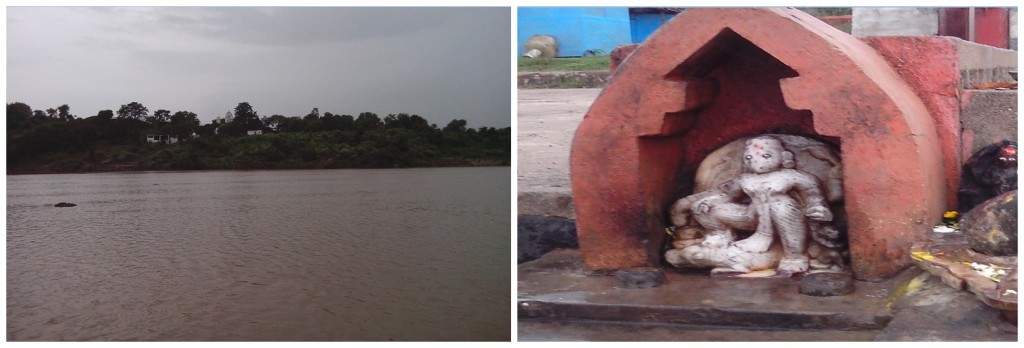As far the path is concerned now ma ahead’s to sum up a very or the only true ritual of the saga called life the ultimate death people have a strong belief that the ashes of the departed soul if submerged in this river one will attain moksha, so people from all over Madhya Pradesh and even outsiders come here to perform this sacred ritual and even the place coined as Gwarighat where dead bodies are also been burnt after performing all the rituals and before reaching Gwarighat it stops at a ghat named after the goddess of strength Ma Kali thus called Kalighat which is again not very crowded other than just days of festivals where a mela like feel comes. Mela stands for Indian village exhibition where villagers display their array of local produce it may range from local sweets to pottery to wooden handicrafts and other decorative articles and elements thus after a religious deities role and acquiring all the possible respect in the form of arti and other offerings one of them specifically is deepdan where people buy or make dias or tiny lights lit by wick of cotton dipped in oil or camphor surrounded by florets or petals. You light them and make them flow in the waves of Ma Narmada and there’s that saying to float those dias in odd numbers and it’s for the sake of departed forefathers and ancestors for their souls to rest in peace, coconuts are also offered as in India coconut is regarded as an auspicious fruit and used in every pious occasion an array of display could be seen in Gwarighat too.


The marble carved statue of MA Rewa (pic 2).

Now to change her mood it takes a rugged terrain and flows with all its might reaching Tilwara Ghat which is overlooked upon from a huge bridge even it acts as a means of transportation from nearby states and places people just stop and pay regards halting on the bridge, but that’s not enough she throttles for more power now and accelerates to more velocity speeding up and carving the natural marble stones stooping at Lamheta Ghat to boast off its magnanimous size, where an enormous several temples constructed by the Beohar-dynasty between 16-18th century CE, including the till-top Radhika-Madhav Temple and Rudra-Bhaskar constructed either by R.R. Sardar-Beohar Kehari Simha (c. 1735-1845) or his son Beohar Dariyav Simha (c.1760-1850). After taking a breath or two it accelerates enormously paving its path through milky white marble rocks thus gaining its name Bhedaghat where it bungees down to many feet’s down in the laps of white marbles while cascading giving an appearance of white thick foamy viscous liquid like thick life giving milk of an universal mother nurturing her children.
to be continued…
